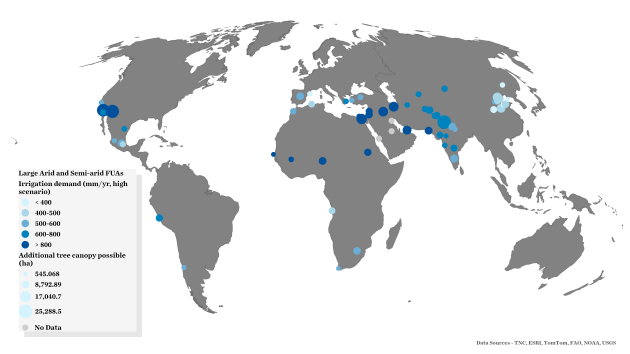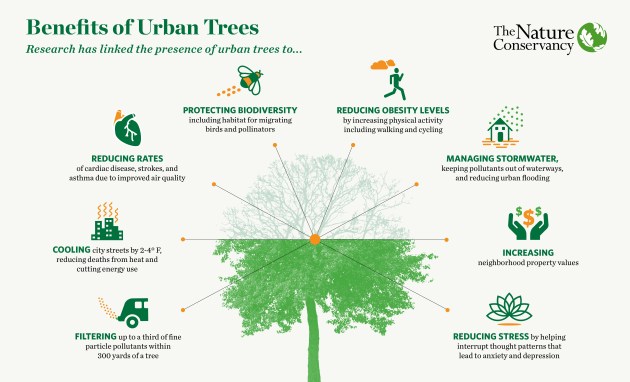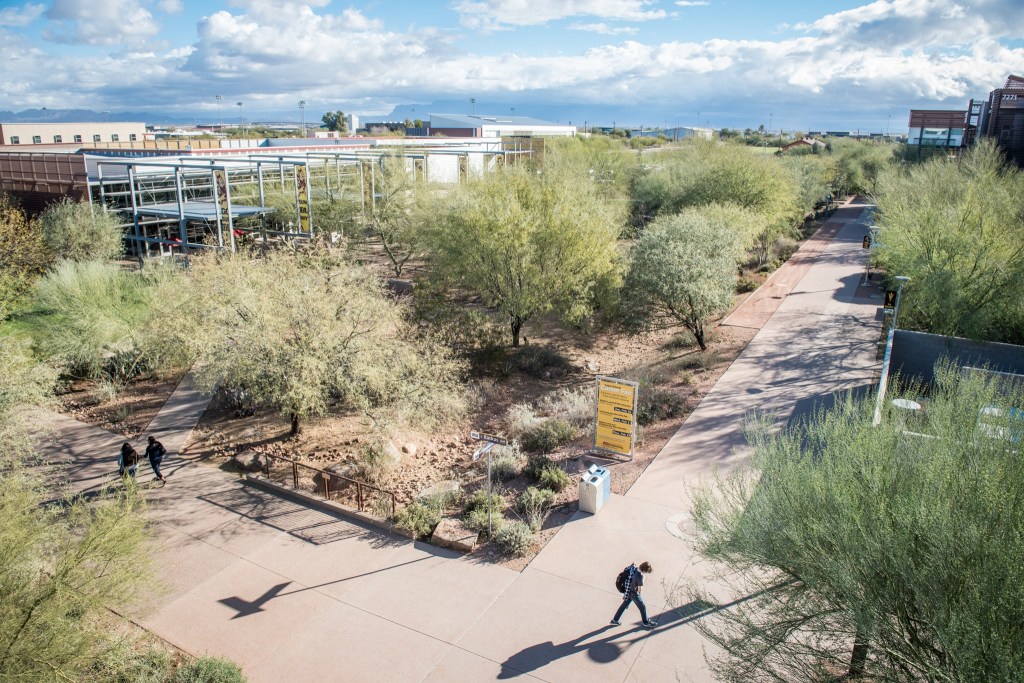As the world grapples with increasingly common and devastating heat waves, new science shows that nature-based solutions—like tree planting and water conservation—are important and cost-effective ways to help protect vulnerable, frontline communities in arid locations from the worst effects of rising heat. But time is of the essence.
The Gist
For the report, “Roots of Resilience: Using Trees to Mitigate Rising Heat in Arid, Frontline Communities,” researchers assessed 61 large cities (> 3 million population) and found that citizens of arid cities have on average 1.5% tree cover in their neighborhood, while the average for citizens in semi-arid cities is 4.2%.
That’s a lot of room for improvement. And researchers estimate that targeted urban greening programs could realistically increase tree canopy to 7.1% in arid cities and 7.3% in semi-arid cities.
According to researchers, such an increase from greening programs in arid cities, like Athens and Phoenix, would meaningfully reduce air temperatures near people’s homes by an average of 0.5˚C. The biggest potential decreases in air temperatures near people’s homes are in urban areas like Kabul (1.2˚C) and Damascus (1.1˚C), which currently have arid climates and limited tree cover.
The Big Picture
According to the Intergovernmental Panel on Climate Change, life-threatening heat and humidity are expected to impact between half to three-fourths of the global population by 2100.
Cities, which are currently home to more than half the world’s population and will add another 2.5 billion people by 2050, will be exposed to double the intensity of heat stress compared to rural surroundings.
“Most at risk,” notes report co-author Rob McDonald, TNC’s lead scientist for nature-based solutions, “are what we characterize in the report as ‘frontline communities,’ or those impacted first and worst by the impacts of extreme heat. These are communities that are often home to people of lower socioeconomic status who are most vulnerable to climate change and least empowered to adapt.”
There is a catch, though, to the use of trees as nature-based solutions in arid cities: water scarcity.

Researchers estimate that increasing tree canopy cover in the 61 cities identified in this report to the maximal potential would also increase aggregate water demand by 3,200 million cubic meters per year. To address that concern, the report notes that the use of location-appropriate, drought-tolerant species could reduce this water demand to 1,500 million cubic meters per year—with especially large water savings possible in semi-arid climates.
Therefore, researchers stress that any plans to increase tree canopy cover in these cities must provide viable options for overcoming potential water limitations and increasing tree equity.
In arid climates where irrigation for trees will be essential, recommendations include leveraging alternative sources of water, such as the reuse of stormwater, as well as wastewater or grey water.
The Takeaway
“Extreme heat is the world’s first widespread climate crisis,” says McDonald. “We’re already feeling it, and the years of coming extreme heat will impact water-scarce cities hardest—combining twin threats of deadly heat with water scarcity from declining precipitation. Science shows trees and other nature-based solutions to climate change have roles to play in reducing heat, if water demands are minimized and water recycling is promoted.”

“Roots of Resilience” identified 96 million people in in arid and semi-arid regions where frontline communities are at risk of extreme heat, but water availability may limit their options to use trees to mitigate heat from climate change.
“Actions to address extreme heat are urgently needed today,” says report co-author Eleni Myrivili, the United Nation’s first Chief Heat Officer. “As those most at risk, frontline communities must be explicitly made the focus of funding and action. It takes years for trees to mature into a robust canopy. Climate change is already here, and every year countries wait to ‘green’ frontline communities is a missed opportunity to save and improve lives.”



